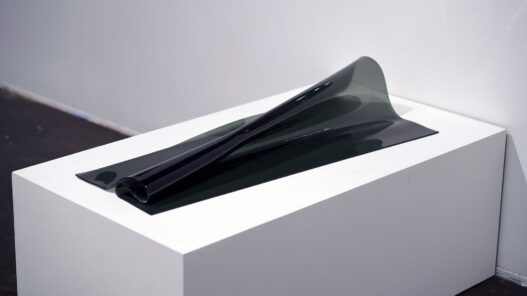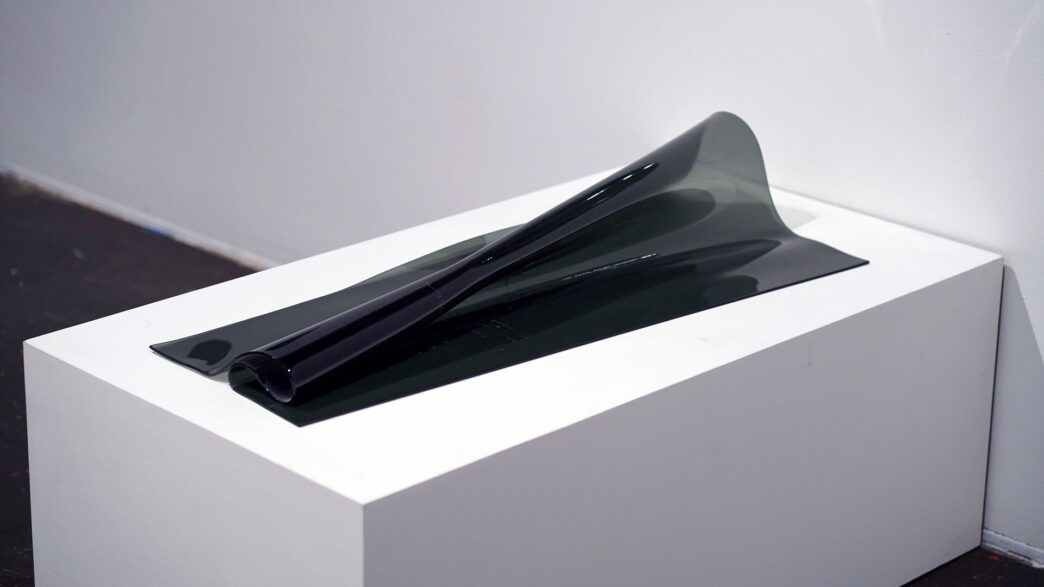Applications are being accepted for the 2023 Burke Prize at the Museum of Arts and Design. Application deadline is April 28, 2023.
The Burke Prize is a biannual contemporary art award given to a new generation of artists working in extended media with a foundation in glass, fiber, clay, metal, or wood. The Burke Prize laureate is chosen by a diverse and eminent committee of curators, artists, and researchers through an open-call application process and receives an unrestricted reward of 50,000 USD.
One Burke Prize artist will also be chosen for The Corning Museum of Glass’s yearly Burke Residence. The Burke Residency artist will get a one-month to five-week residency, as well as all of the advantages and possibilities available to artists chosen for The Studio’s Artist-in-Residence program.
The Burke Award is named after Marian and Russell Burke, two lifelong supporters of MAD and avid collectors of craft. It is inspired by the disciplines that created the American studio craft movement. The Burke Prize, established in 2018, recognizes great artists, 45 and under, working in the United States whose work is intellectually rigorous, relevant, and pushes the frontiers of materials and creative processes.
2023 Burke Prize jurors
Camille Ann Brewer, cultural heritage consultant
Garth Johnson, Paul Phillips and Sharon Sullivan Curator of Ceramics, Everson Museum of Art
Charisse Pearlina Weston, 2021 Burke Prize winner
Previous winners
Charisse Pearlina Weston (born 1988 in the United States) is a conceptual artist and writer whose work is based on in-depth material and metaphorical explorations of the intimacies and interiors of Black life. She uses glass to thematically reflect both the everyday risk of anti-Black violence and Blackness’s precocity and malleability in the face of this violence. Her work addresses the interstices of Black interiors and intimacies by fusing glass sculptures and photographs with poetic bits of Black experience.
Weston received her MFA from the University of California-Irvine, an MSc from the University of Edinburgh, a BA from the University of North Texas, and completed the Whitney Museum of American Art’s Independent Study Program. Recent exhibitions include solo exhibitions at Abrons Art Center and Recess as well as group shows at the Contemporary Art Museum, Houston, and ArtPace, San Antonio.
Indira Allegra (United States, b. 1980) makes sculptures, performances, texts, and installations that investigate memorial practices and the unseen forces of generational trauma. She uses the ideology and methodology of weaving to explore the repetitive intersections of forces held under tension, be they material, social, or emotional. Allegra holds a Bachelor of Fine Arts, with high distinction, from California College of the Arts, where she studied visual studies, writing, and textile. She also earned an Associate of Applied Science in Sign Language Interpretation from Portland Community College and studied biology at Yale University. She has received the Artadia Award (2018), Tosa Studio Award (2018), Mike Kelley Foundation for the Arts Artist Project Grant (2018), MAP Fund Grant (2018), and Windgate Craft Fellowship (2016), among other accolades.
Cannupa Hanska Luger (United States, b. 1979) is a multidisciplinary artist of Mandan, Hidatsa, Arikara, Lakota, Austrian, and Norwegian descent. Through monumental installations that incorporate ceramics, video, sound, fiber, steel, and cut paper, he interweaves performance and political action to communicate stories about twenty-first-century indigeneity. Using social collaboration in response to timely and site-specific issues, Luger produces multipronged projects that often present a call to action, provoking diverse publics to engage with indigenous peoples and values outside the lens of colonial social structuring. He lectures and participates in residencies around the globe, and his work is collected internationally.
About the Museum of Arts and Design
The Museum of Arts and Design (MAD) supports modern creators in all creative sectors and exhibits the work of artists, designers, and artisans of the greatest caliber. MAD has honored all aspects of creation and the creative processes by which materials are transformed, from traditional crafts to cutting-edge technologies, since its founding in 1956 by philanthropist and visionary Aileen Osborn Webb. The Museum’s curatorial program now relies on a rich history of exhibitions that highlight a cross-disciplinary approach to art and design, revealing the craftsmanship behind the objects and surroundings that affect our daily lives. MAD provides an international platform for practitioners who are influencing the direction of cultural production and driving twenty-first-century innovation, and fosters a participatory setting for visitors to have direct encounters with skilled making and compelling works of art and design.




















